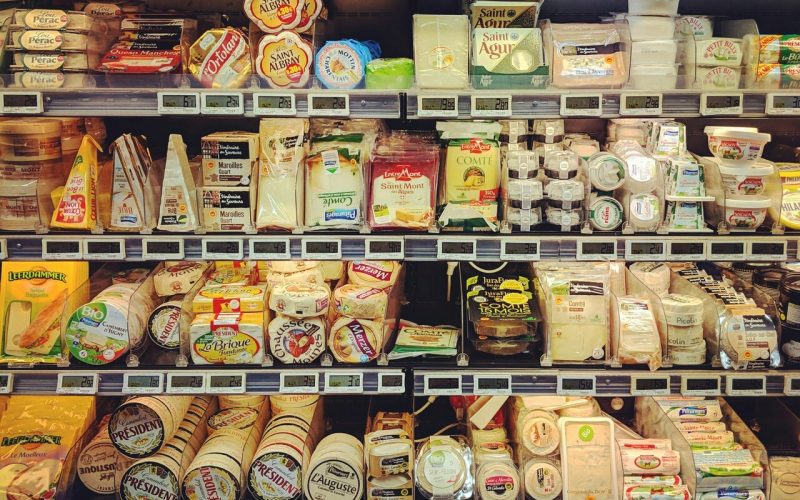The Mediterranean diet has long been hailed as one of the healthiest ways to eat as it balances nourishment and enjoyment. But recently, it has come under attack, with critics claiming that it is little more than a romanticised construct. Nutri-Score inventor Serge Hercberg, in a recent interview, argued that the Mediterranean diet does not exist in any real sense, calling it an artificial ideal that has little basis in reality.
For supporters of Nutri-Score, the rising obesity rates in Mediterranean countries—such as Italy, where childhood obesity levels are among the highest in Europe—seem to serve as proof that the diet is not merely a myth but a failure. The argument is that if the Mediterranean diet were truly as great as its reputation suggests, then its birthplace should be thriving, not struggling with obesity.
But this entirely misses the point. The Mediterranean diet’s cultural and nutritional value is not in question. What is questionable is Nutri-Score itself, a deeply flawed nutritional labelling system that fails consumers on multiple levels. Instead of focusing on whether an idealised version of the Mediterranean diet exists, we should be discussing how Nutri-Score is failing at its own mission: guiding consumers towards healthier choices.
A flawed and inconsistent algorithm
The biggest issue with Nutri-Score is its deeply flawed algorithm, which often results in arbitrary and misleading classifications of food products. It claims to help consumers make better nutritional choices through a colour-coded letter grade, from A (healthiest) to E (least healthy). In theory, this is supposed to provide an at-a-glance assessment of food quality. In practice, however, it creates confusion.
One major flaw is how Nutri-Score struggles to distinguish between different variations of the same food group. For example, it has been shown to fail at differentiating between full-fat and leaner cheeses, creams, and processed meats like sausages. A high-quality, aged cheese with reduced salt might receive the same poor rating as an ultra-processed cheese loaded with additives. The same goes for wholegrain and refined pasta or rice. In other words, Nutri-Score often fails to make distinctions that actually matter in a balanced diet.
For cheese lovers, Nutri-Score provides no useful information at all. It does not reward lower-salt options or highlight meaningful nutritional differences between varieties. Instead, it simply assigns broad, often negative ratings to an entire category. This does not help consumers make informed decisions and might actually turn people away from eating cheese as this misinformation demonises whole food groups based on an inflexible algorithm.
Danone’s partial exit exposes the cracks
Even major companies that initially championed Nutri-Score are now recognising its problems. French multinational Danone was one of the strongest proponents of the packaging label, adopting it across its dairy and plant-based drink products. But in a surprising turn, the company recently announced that it would begin phasing Nutri-Score out from these product categories. The reason? The system does not fairly or accurately reflect the nutritional benefits of many dairy products.
Danone’s decision is particularly damning because brands are not supposed to selectively apply Nutri-Score. The labelling system is meant to be used consistently across all products, so that consumers can compare different food groups fairly. If a leading company like Danone starts picking and choosing where it applies Nutri-Score, it undermines the system’s credibility altogether. Other companies may follow suit, and Nutri-Score could lose what little authority it still holds.
Yet criticism of Nutri-Score is not limited to companies. Entire countries are rejecting the label, citing concerns over its impact on national food traditions and consumer understanding. Portugal, Italy, and Romania have all voiced strong opposition, arguing that Nutri-Score discriminates against staple foods central to their diets. Switzerland’s Migros retailer has also backed away from the system over the label’s controversies and limitations.
This backlash is not just about national pride—it’s about consumer rights. A labelling system that misleads rather than informs is not fit for purpose. When Nutri-Score unfairly penalises traditional, minimally processed foods like olive oil and certain cheeses while giving processed, artificially fortified foods a healthier rating, it raises serious questions about whose interests the system truly serves.
The issue of shifting diets
The discussion around Mediterranean countries’ rising obesity rates should not be an attack on the Mediterranean diet itself. The real issue is the increasing shift away from traditional eating patterns, as ultra-processed foods take over grocery store shelves and fast-food chains expand their reach. Blaming the Mediterranean diet for modern dietary issues is like blaming a seatbelt for a car crash—completely missing the true cause.
If anything, the rise in obesity is a sign that the Mediterranean diet, as it was traditionally followed, is disappearing under the pressure of industrialised food systems. Labelling systems like Nutri-Score, instead of helping consumers navigate this landscape, often make matters worse by providing misleading guidance. If healthier eating is to be encouraged, a system is needed that promotes whole, minimally processed foods.
There is no doubt that food labelling can be a useful tool in helping consumers make healthier choices. But Nutri-Score, with its inconsistencies and biases, is not the solution. A better approach would be a system that takes into account not just macronutrient content but also food processing levels and ingredient quality. Consumers deserve transparency, not oversimplified ratings that do more harm than good.









